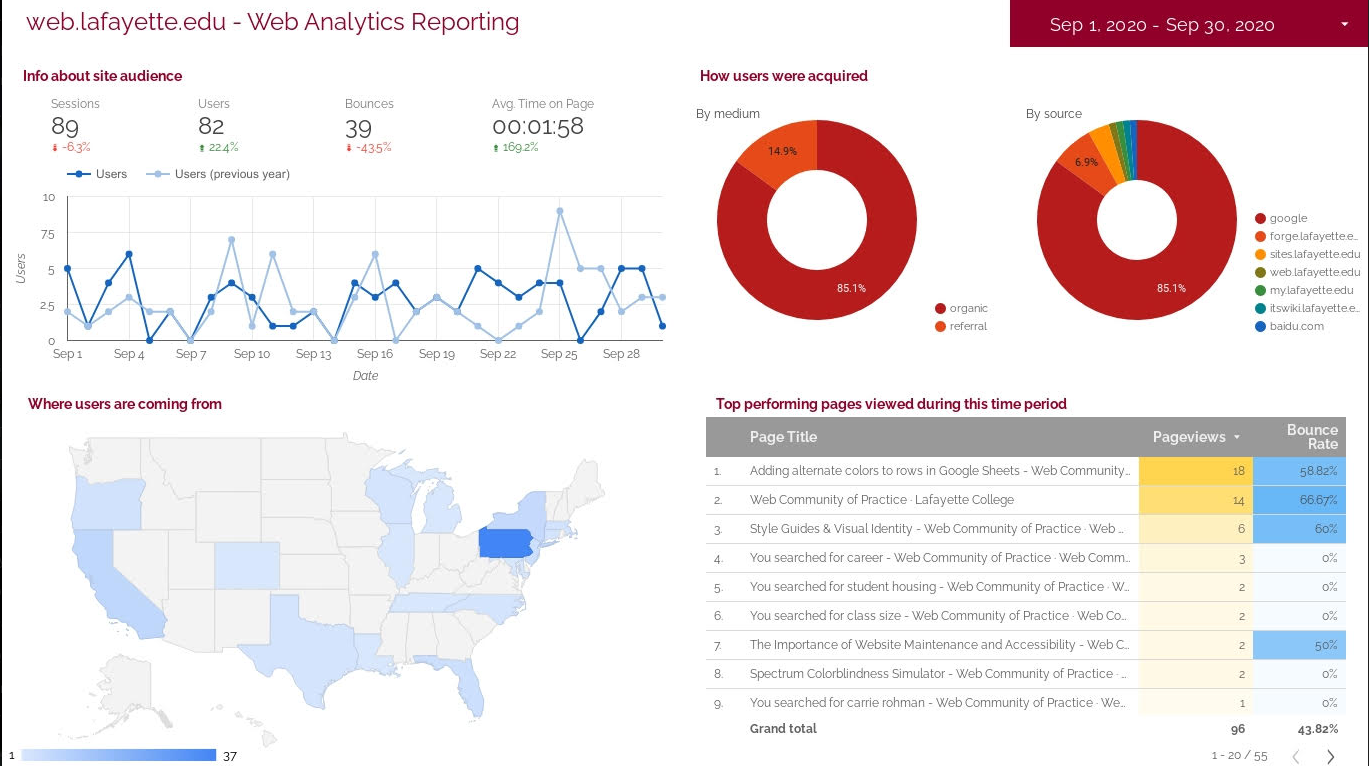Lafayette CollegeTechnology Help
Web Analytics Reports
Overview
The Web Content Management Team offers monthly analytics reports for branded websites (e.g. its.lafayette.edu) sent to those designated as the Forge Primary admin for that site.

Glossary
The following glossary provides definitions and context for some of the terms and phrases that are part of the analytics report:
Pageview: A pageview is recorded every time a page is viewed. A pageview is not the equivalent of a person; a single person can visit a webpage multiple times, each of which would generate a page view.
Session: A session is a collection of all the interactions on a website including pageviews, clicks, scrolling etc. during a 30-minute window. A session is not the equivalent of a person; a single person can visit a site multiple times throughout the day, each visit generating a session.
Engagement: The engagement rate is a metric that measures the percentage of visitors who interacted with a piece of content, such as clicking on the link, filling out a form, or spending a significant amount of time on the site.
Bounce: A bounce is a visit in which a single page is viewed, and then the person leaves the website within 30-seconds. A page with a high bounce rate means people are visiting the page, and then not going on to visit any other page on your website.
Average time on page: The average time on page is the amount of time people spent on a page before going on to the next page within your website.
Landing pages: Landing pages are the page that people used to enter your website. This may not be (and often is not) your home page.
Users acquired by medium: Users acquired by medium breaks down how people got to your website by the medium that delivered them.
- “Organic” is search
- “Email” is someone clicking on a link in an email
- “Referral” is a link from another website
- “Social media” is a link from Facebook, Twitter, or some other social media platform
- “Cpc” is someone clicking on an advertisement
- “Direct” is someone going directly to your website, without being referred by one of the previous medium
Sources: Sources are where traffic to your website came from.